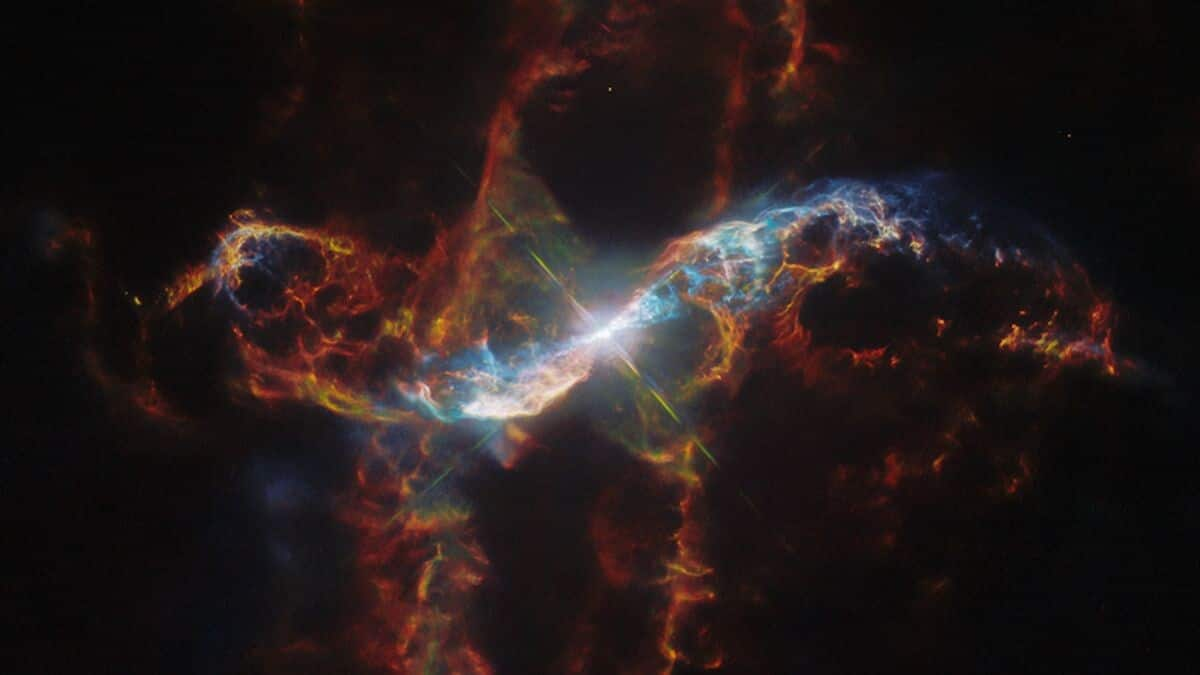
Hubble captures stunning image of 'stellar volcano' in Aquarius constellation
What's the story
NASA's Hubble Space Telescope has clicked a stunning image of two stars from a system, called R Aquarii, situated about 710 light-years away in the Aquarius constellation. The stars have been closely interacting for centuries, forming a complex hourglass-shaped nebula. This celestial wonder is the result of a compact white dwarf and its companion star, an aging red giant that has ballooned to over 400 times the size of our Sun.
Stellar dynamics
R Aquarii: A unique star system with explosive interactions
The white dwarf in the R Aquarii system orbits close to the red giant every 44 years, siphoning off material and occasionally triggering explosions like "a gigantic hydrogen bomb," the Hubble team said. These eruptions propel twisted streams of glowing gas into space at speeds of over 1.6 million km/h, fast enough to reach from Earth to the Moon in just 15 minutes. The ejected material creates a spectacle like "a lawn sprinkler gone berserk."
Cosmic recycling
Eruptions contribute to cosmic recycling
The eruptions from R Aquarii are not only visually stunning but also serve a key role in the cosmic cycle. "This dramatically demonstrates how the universe redistributes the products of nuclear energy that form deep inside stars and jet back into space," the Hubble team said. The expelled material contains heavier elements like carbon, nitrogen, and oxygen - building blocks of planet formation and life as we know it.
Long-term study
Hubble's decade-long observations reveal nebula's evolution
Since its launch in 1990, the Hubble telescope has been watching R Aquarii, making it one of the most studied symbiotic stars. In partnership with the Chandra X-ray observatory, scientists have observed changes in X-ray emission from the nebula. Hubble's latest image shows ejected material forming a spiral pattern due to the explosion's force and strong magnetic fields. A time-lapse video made from five Hubble images over the last decade showcases these changes and the red giant's strong pulsations.